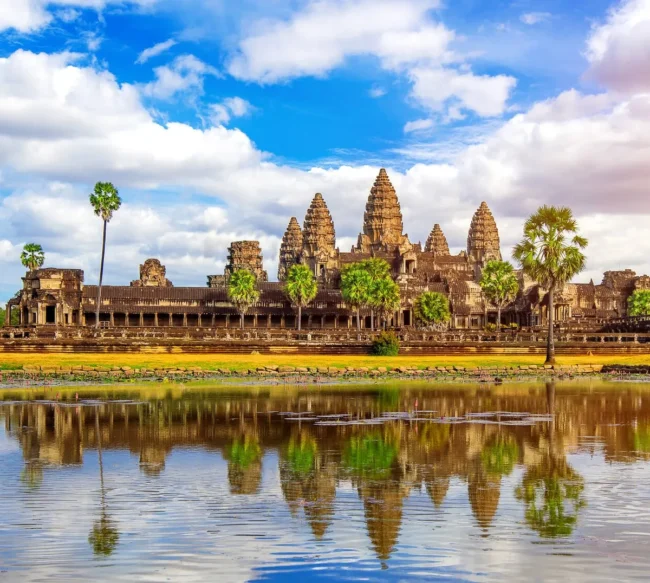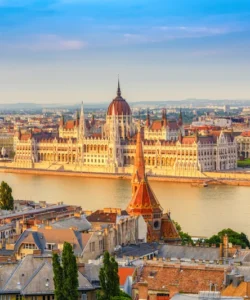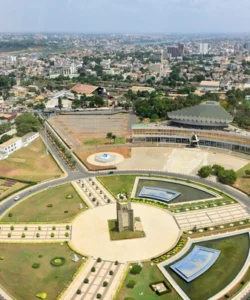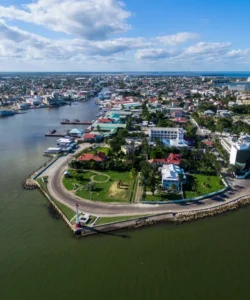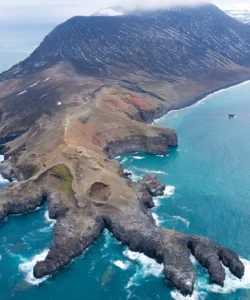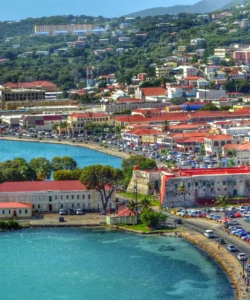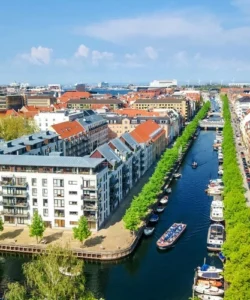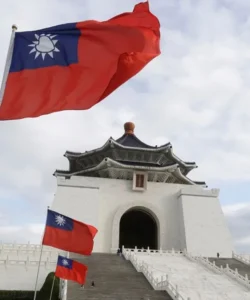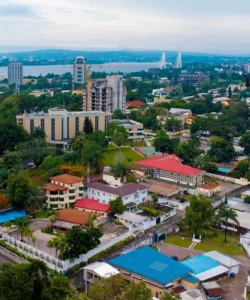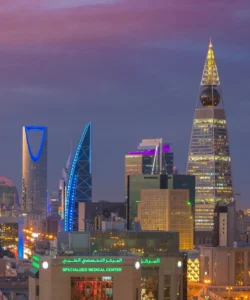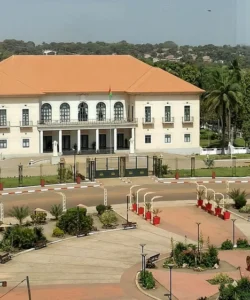Cambodia, officially known as the Kingdom of Cambodia, is a Southeast Asian nation renowned for its rich history, ancient temples, and vibrant culture.
Area and Geography: Cambodia covers an area of approximately 181,035 square kilometers (69,898 square miles). It is located in the southwestern part of the Indochinese Peninsula, bordering Thailand to the west, Laos to the north, Vietnam to the east, and the Gulf of Thailand to the south. The country’s terrain primarily consists of low-lying central plains, with mountains in the southwest (Cardamom Mountains and Elephant Mountains) and north (Dangrek Mountains). The Mekong River flows through the country from north to south, and the Tonlé Sap Lake, a significant freshwater lake, is a prominent geographical feature. The southern coastline features mangrove marshes, peninsulas, and sandy beaches, along with around 50 islands.
Population: Cambodia has a population of about 17 million people, with the majority being ethnically Khmer.
Language: The official language of Cambodia is Khmer.
Currency: The official currency of Cambodia is the Cambodian Riel (KHR). US dollars are also widely accepted and often preferred for larger transactions.
Religion: Buddhism is the state religion of Cambodia, with approximately 97% of the population practicing Theravada Buddhism. Other religions include Islam (around 2%), Christianity (0.3%), and various tribal animist beliefs.
Capital City: The capital and largest city of Cambodia is Phnom Penh.
Major Cities: Besides Phnom Penh, other significant cities include Siem Reap, Battambang, Takeo, Poipet, Kampong Chhnang, and Sihanoukville (Kampong Saom).
Attractions and Wonders:
- Angkor Wat (Angkor Archaeological Park): The crown jewel of Cambodia, and the largest religious monument in the world. It is a UNESCO World Heritage site and a top tourist destination. While not one of the “New 7 Wonders of the World” globally, it is often considered one of the “Seven Wonders of Asia” and Cambodia’s most significant wonder.
- Siem Reap: The gateway city to the Angkor temples, offering a lively atmosphere with markets, restaurants, and cultural experiences.
- Phnom Penh: The capital city, home to attractions like the Royal Palace, Silver Pagoda, National Museum, Tuol Sleng Genocide Museum, and the Choeung Ek Killing Fields, which serve as poignant reminders of Cambodia’s tragic past.
- Ta Prohm Temple: Famous for its integration with nature, where ancient temple stones are intertwined with massive tree roots, as seen in the “Tomb Raider” movie.
- Bayon Temple: Known for its distinctive smiling stone faces within the Angkor Thom complex.
- Koh Rong & Koh Rong Samloem: Beautiful islands offering tranquil beaches, snorkeling, and island hopping.
- Sihanoukville: A coastal city with beaches and resorts.
- Battambang: Known for its colonial architecture and rural charm.
- Ratanakiri: A northeastern province known for its natural beauty, including waterfalls and volcanic lakes.
- Prasat Preah Vihear: An ancient Khmer temple perched on a cliff, a UNESCO World Heritage site.
- Sambor Prei Kuk: A pre-Angkorian temple site dating from the early 7th century.
Architecture:
Cambodian architecture is most famously represented by the ancient Khmer temples of Angkor, showcasing intricate carvings, towering spires, and impressive stone construction. Styles evolved through different periods of the Khmer Empire, with Angkor Wat being a pinnacle of classical Khmer architecture. Beyond the ancient temples, traditional Cambodian housing often includes stilt houses, particularly along waterways, designed to mitigate floodwaters during the rainy season. In more recent history, “New Khmer Architecture” emerged in the mid-20th century, incorporating modern elements while still being climate-sensitive, using features like louver blocks, concrete panels, and overhangs for shading.
Roads: Cambodia’s road network is extensive, with approximately 67,902.19 kilometers as of 2022. The network includes national roads (connecting to bordering countries and provinces), provincial roads, and rural roads. While significant improvements have been made, particularly on national roads and the recent completion of the Phnom Penh-Sihanoukville expressway, some rural roads can still be affected by the rainy season. The country has three main international roads that are part of the Asian Highway system (AH1, AH11, and AH21).
Hotels and Restaurants: Cambodia offers a wide range of accommodation options, from luxury international hotels in Phnom Penh and Siem Reap to boutique hotels, guesthouses, and budget-friendly hostels throughout the country. The hospitality sector is recovering, with increased investor confidence due to improved infrastructure. Similarly, the restaurant scene is diverse, catering to various tastes. You’ll find high-end hotel restaurants, local eateries serving traditional Khmer cuisine, and international dining options in major cities and tourist hubs.
Cuisine: Cambodian cuisine, also known as Khmer cuisine, is known for its subtle flavors and aromatic ingredients. Staples often include rice and noodles. Key ingredients typically include lemongrass, galangal, kaffir lime leaves, turmeric, garlic, and fish sauce.
- Amok Trey: Often considered the national dish, it’s a steamed fish curry typically cooked with coconut milk and kroeung (a local spice paste).
- Lok Lak: Stir-fried beef usually served with a fried egg, fresh vegetables, and a dipping sauce made of lime juice and Kampot pepper.
- Bai Sach Chrouk: Grilled pork and rice, a popular breakfast dish.
- Nom Banh Chok: Khmer rice noodles served with a fish-based green curry gravy and fresh vegetables.
- Khmer Red Curry: A milder, coconut milk-based curry with meat (chicken, beef, or fish) and sweet potatoes, often served with rice or baguette.
- Kuy Teav: A traditional noodle soup with a slow-simmered pork or beef broth, served with rice noodles and various toppings.
Annual Travel: Cambodia’s tourism sector is showing strong signs of recovery. In the first five months of 2025, total international tourist arrivals increased by 11.7% year-on-year to 2,950,824 visitors, representing a recovery rate of 102.2% compared to the same period in 2019. In 2024, total international visitor arrivals reached 4,303,188. Key source markets for business travel in 2024 included China, Vietnam, Indonesia, Thailand, and Taiwan.
